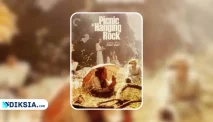One day, Josie comes into the store with her mother. Josie is a sickly young girl, and she is immediately drawn to Klara. Klara sees Josie’s pain, and she wants to help her. Josie’s mother decides to adopt Klara, and Klara becomes Josie’s best friend.
Klara helps Josie through her illness, and she teaches her about the world. Klara also learns a lot from Josie, and she comes to understand the true meaning of love and compassion. However, Klara also comes to understand the limitations of her own existence as an AF. She is not a human, and she can never truly understand what it means to be human.
Characters and Character Development
Klara is the protagonist of the novel. She is an AF who is curious, compassionate, and eager to learn. Klara undergoes significant character development throughout the novel. She begins as a naive and sheltered AF, but she grows to become more understanding and empathetic.
Josie is the deuteragonist of the novel. She is a sickly young girl who is kind, gentle, and intelligent. Josie is also a complex character who is struggling with her own mortality.
The other characters in the novel are mostly supporting characters. They help to flesh out the world of the novel and to provide Klara with opportunities for growth and development.
Theme and Message
The theme of Klara and the Sun is the nature of love and compassion. The novel explores the ways in which love can be both healing and destructive. It also explores the ways in which compassion can be both empowering and limiting.
The message of Klara and the Sun is that love and compassion are essential to the human experience. They are what make us human, and they are what give our lives meaning.
Writing Style
The writing style of Klara and the Sun is simple and straightforward. The novel is told from Klara’s perspective, and her limited understanding of the world is reflected in her language. This can make the novel a bit slow-paced at times, but it also gives the novel a unique and intimate feel.
Pros and Cons
Pros:
- Thought-provoking exploration of the nature of love, loss, and humanity
- Unique and insightful perspective from the point of view of an AF
- Beautiful and poetic writing style
- Well-developed characters
Cons:
- Some readers may find the plot slow-paced
- The ending may be ambiguous for some readers (Some readers may find Klara’s limited understanding of the world frustrating)
Comparison to Other Works
Klara and the Sun has been compared to other works by Kazuo Ishiguro, such as Never Let Me Go and The Remains of the Day. However, it also has some similarities to other works of science fiction novels, such as Do Androids Dream of Electric Sheep, Her, The Windup Girl and The Time Machine.
Where to Read Novel
Klara and the Sun is available in hardcover, paperback, and audiobook formats. It can be purchased from most major retailers, including Amazon, Barnes & Noble, and Books-A-Million.
Conclusion
Klara and the Sun is a thought-provoking novel about love, loss, and the nature of humanity. Told from the perspective of an AF, the novel explores the ways in which technology can both connect and alienate us.






